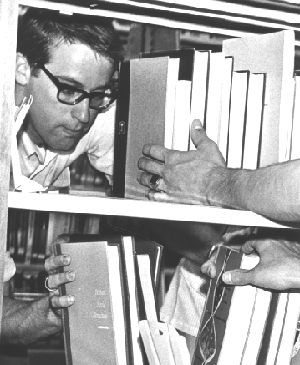"Am I Really Writing?": Student Hesitation
To date, most students seem generally supportive of the Multimodal Composition Initiative and enjoy creating film, audio, and web page texts. However, in course evaluations from Phase I students echoed sentiments found by Andrea Lunsford (2006) in her multimodal composing class at Stanford: “they told us in no uncertain terms that while they loved the opportunity to explore new media in writing and to push their writing in new directions, they weren’t sure their writing was actually improving. (In other words, they knew they were learning something, but many of them would not call it writing.)” (p. 175). Some of our own weaker writing students expressed similar concerns that they needed more practice with traditional writing tasks and they could “pick up the technology stuff later,” indicating that the students do not yet see technology use as one of several rhetorical choices embedded in the composing process.
A few also noted that trying to compose on a web page just amplified writing errors and made the process of writing even more daunting because there were more issues to think about such as design. Susan Kirtley (2005) notes that more knowledge is needed to study this link between poor writing and weak computer skills. She asks, “Do students who lack computer skills understand this as a writing deficiency? Do students who have trouble with writing see the computer as helping or hindering their writing process?” (p. 223). It is clear from the evaluations from Phase I that a few students do view the computer as “getting in the way” of composing effectively if it is used for something other than word processing. Two students even mentioned that they were not interested in putting their papers on the web. As rationale, one noted, “I feel like I can’t keep up with all my web stuff as is. I spend over an hour posting to Facebook and checking feeds and I don’t want another web chore to do. I’d rather do a print paper.” “Web fatigue,” and specifically Web 2.0 fatigue, is clearly a point for consideration for future phases, particularly when a key aspect of web page making is public delivery.
Issues of Access
Another potential challenge for composition students is lack of access to computers. Virtually all students noted that they were able to find computers on campus for word-processing and Blackboard use, but had a hard time finding labs on campus that also had Windows MovieMaker or Microsoft FrontPage, two programs used in class. Some labs were outfitted with differing numbers of seat licenses and versions of programs. Students also expressed concern over compatibility issues between the versions of these programs on their own laptops, and a few were disappointed that going back and forth between the lab computer used in class and the personal laptop was not seamless. This feedback echoes earlier findings in Kirtley’s study that claims we only see a small part of the composing process when students use computers to compose, and that the reality for many students is that finding the right version of software and an available seat in a crowded computer lab was a problem for many students (p. 210). Issues of access are always embedded in the “finished” products we receive. Therefore some only some students may view multimodal composing as a “natural” process linked to other multimodal tasks they do outside of the classroom such as creating social networking pages.
These concerns are not unique to multimodal projects at the liberal arts college. All three of these challenges have been cited as growing pains inherent in the transition between a purely print-based program and one grounded in multimodality (see Kirtley 2005; Lunsford 2006; Anderson et al. 2006; Selber 2004). Still, some resources do exist to help programs of all sizes cope with these challenges such as the essays in Multimodal Composition (2008) and specifically, the essay by Richard J. Selfe on “Sustaining Multimodal Composition.” However, these resources do not describe the unique challenges and benefits of integrating multimodality within the liberal arts college. In “How the Liberal Arts College Environment Enhances Multimodal Composition Efforts,” I describe how I combated the above challenges using the unique features of the liberal arts college context.
